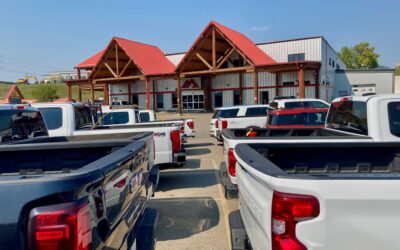ELD Tips for Final Phase of Mandate
The federal government is going to finalize the ELD mandate on December 16, 2019. Being halfway into the year, the electronic logging device mandate by the federal government is taking its final shapes and all the decisions regarding ELD compliance are worth taking a look at. Roadside officials responsible for enforcing ELD compliance will be examining compliance at inspection stations across the country.
To make compliance easier for carriers and operators, here are some important tips to ensure you are complying properly with the new mandate and to reduce the chance of getting infractions.
Electronic logging device-related violations can be bad for carriers and truck drivers. There are severe infractions that can add five points to a carrier’s safety measurement system score and that can be devastating for the carrier company.
We are going to take a look at some of the most prominent tips that carrier and drivers alike need to be aware of in order to keep their ELD mandate compliance in check and reduce their chances of getting any major infractions.
ELD Display Must be Accessible from the Exterior of the Vehicle
The electronic logging device in all vehicles across the industry are supposed to be designed in a way that the roadside enforcement officials have a clear-cut opportunity to make inspections without having to get inside the vehicle. There are ELD solutions that feature the use of tablets and smartphones that you can easily hand over to the inspector to comply with this integral part of the regulation mandated by the federal government.
Must Be on the Federal Motor Carrier Safety Association’s Registered Devices List
Perhaps, the most important tip is to be sure the electronic logging device used by all the trucks in the fleet are registered in the list of the FMCSA’s registered device list. There is no other way about it. Only the ELD devices registered with the FMCSA are acceptable by officers on duty that are enforcing the compliance of the mandate. Automatic on-board recorders (AOBRDs) that were previously “grandfathered” will no longer be allowed.
Claim Unassigned Driving Time When Operator Logs In
From the point the operator logs into the electronic logging device, make sure that the operator reviews any and all unassigned driving time, which the device records and claim them under their own account. If they cannot, then they should at least indicate that the time belongs to someone else who was operating the vehicle before them. The administrative users need to make a review of this unassigned driving time during this scenario to attribute it to whoever was indeed operating the vehicle at the time. Failing to comply with this entails the risk of incurring an out of service condition and a serious infraction worth adding five points to the carrier’s safety measurement system score.
Have Blank Paper Logs Readily Available
Although ELDs have started to shift toward to the digital aspect, drivers still need to have blank paper logs which are sufficient enough to record the duty status and all other information relevant for at least eight working days. The reason for this is to be able to record relevant data in case the electronic logging device goes in for diagnostic work, which can be necessary from time to time.
Be Ready to Provide All Documents
The drivers need to be trained in order to be able to access the necessary instructions that allow them to enter, retrieve and transfer the relevant data from the electronic logging devices that they are using with the vehicle(s) they operate for the carrier.
The industry and the relevant authorities which provide oversight for the safety of vehicles, assets and other motorists on the road have been working on making relevant improvements to the industry to increase the safety on the road.
Electronic Logging Devices and the mandates that govern their compliance have been set into place in order to ensure the trucking industry is playing its part in keeping the roads across North America safer for all motorists.
These are all the tips that can help both drivers and carriers make sure that they can get through the updated electronic logging device portion of any roadside inspections being carried out by enforcement officers. With Roadcheck 2019 conducting a thorough check for all vehicles across North America, understanding and implementing these tips will be crucial for streamlining the inspection process for future reference as well.
It is suggested that the operators renew their training sessions with the operators within their fleet in order to ensure they have all the training they need to comply with the new mandates. It will not just help them become capable of pulling through the Road Check 2019 but also through any inspections that take place every day of the year. Here is a summary of all the tips they need to keep in mind in order to comply with the ELD mandate in 2019 and beyond:
- The ELD Display Has to be Accessible from the Exterior of the Vehicle
- The ELD has to be on the Federal Motor Carrier Safety Association’s Registered Devices List
- Claim the Unassigned Driving Time whenever the Operator Logs In
- You Need to Have Blank Paper Logs Readily Available
- The Operator and Carrier Have to be Ready to Procure All Supporting Documents Related to the Electronic Logging Device
Source: https://www.worktruckonline.com/332099/tips-to-help-fleets-with-elds-preapre-for-roadcheck-2019






